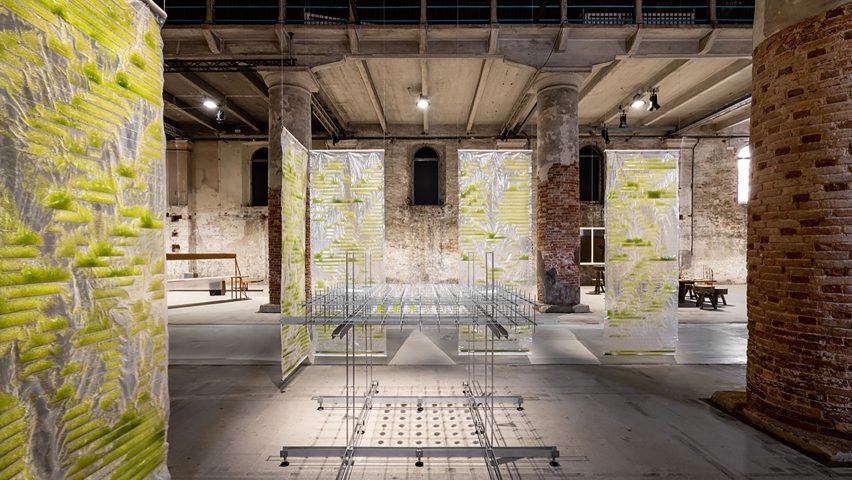
Bit.Bio.Bot exhibition shows how algae can be used as air purifiers and protein source
EcoLogicStudio has designed the Bit.Bio.Bot exhibition at the Venice Architecture Biennale, which invites visitors to taste freshly harvested algae and consider growing it in their own homes.
Combining architecture and microbiology, the exhibition shows how city dwellers could purify the air, sequester carbon, gain a sustainable food source and enjoy a greater connection to nature by cultivating their own algae.
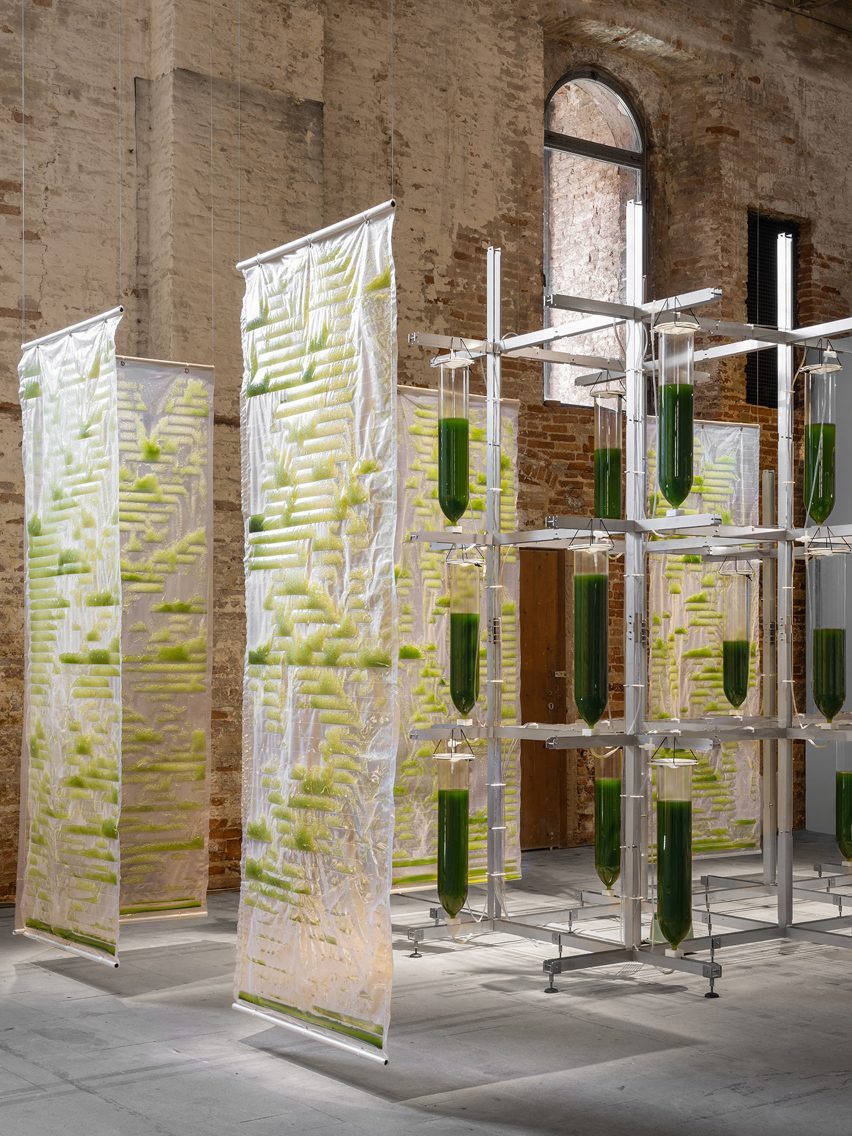
Algae are powerful photosynthesisers and can consume more carbon dioxide than trees.
London-based EcoLogicStudio, which has been working with the ancient microbes for 10 years, describes them as having "a unique biological intelligence" because their metabolism is so efficient.
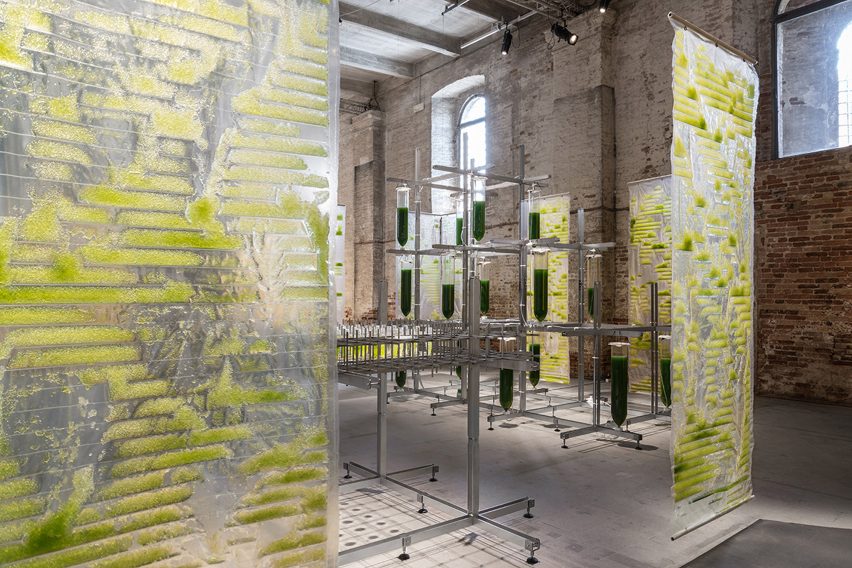
In its exhibition, it presents two architectural systems for harnessing this power through domestic-scale bioreactors — one in the form of "living cladding" that turns walls into air purifiers, and another in the form of a vertical garden that allows for algae farming.
Algae are among the most nutritious organisms on earth, and the two kinds that EcoLogicStudio are growing in Bit.Bio.Bot — spirulina platensis and chlorella — are already widely consumed as health supplements.
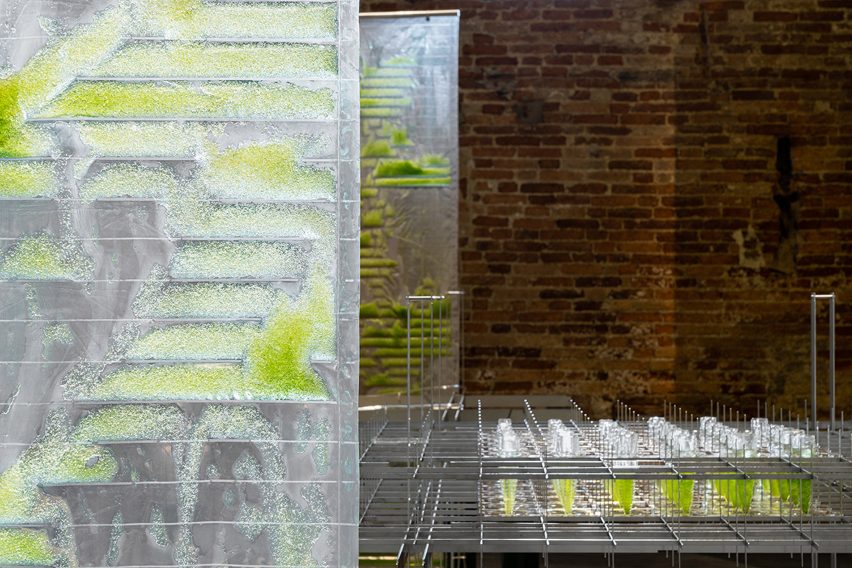
To explore their culinary potential, there is also a third installation, the Convivium, a table where people can gather to experiment with and taste the freshly harvested algae.
The table holds 36 unique pieces of crystal glassware, 3D-printed by Swarovski from EcoLogicStudio's design, with shapes that are based on the morphogenesis of microalgae cells.
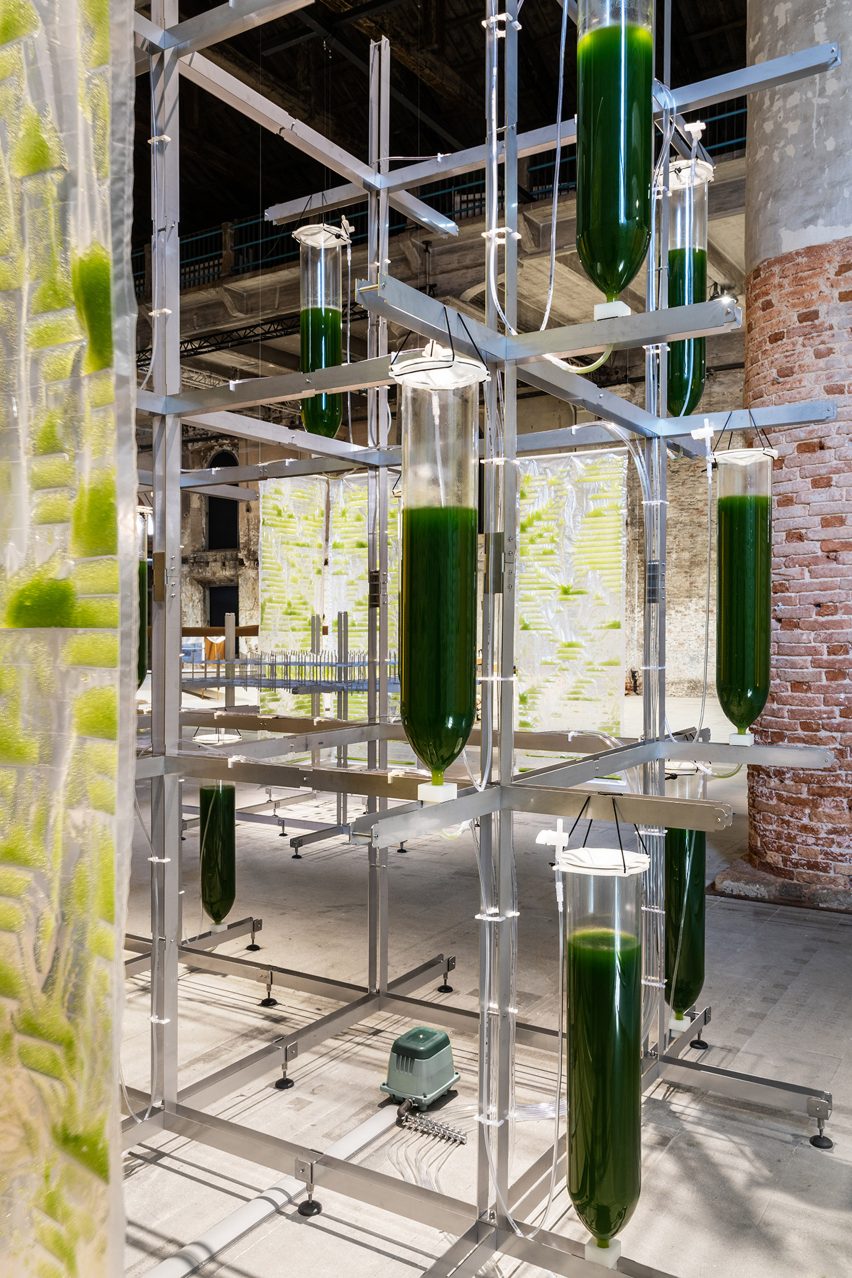
"The taste of spirulina is intense and by nature a bit salty," EcoLogicStudio co-founder Marco Poletto told Dezeen. "We worked with chefs to develop gels that could enhance the taste of spirulina and that could be drunk via the 3D glassware part of the Convivium."
"We really hope we will be able to let visitors taste it later on during this Biennale [once Covid safety restrictions are lifted]."
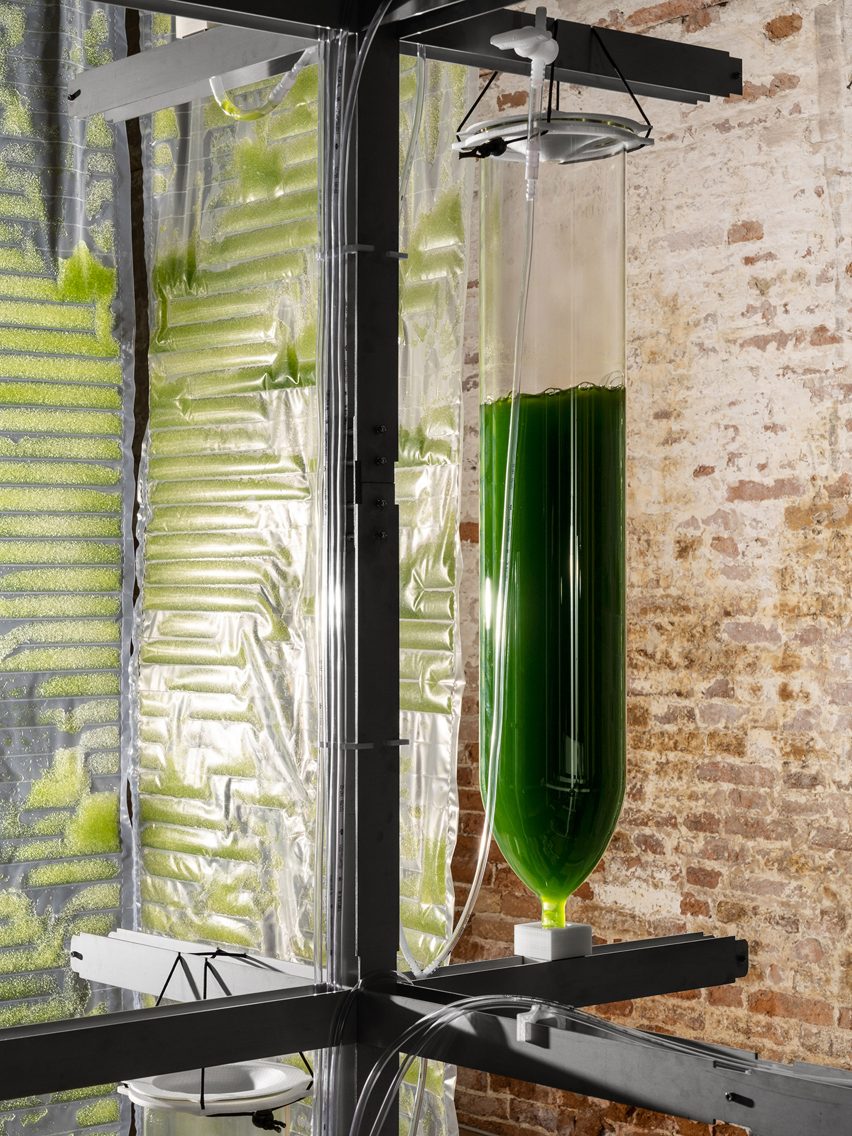
The other two installations in the exhibition adapt two of EcoLogicStudio's existing product designs — the curtain-like PhotoSynthEtica cladding and the BioBombola DIY edible algae kit.
The PhotoSynthEtica cladding was created to cover new and existing buildings and serves as both a sunshade and photobioreactor that purifies the air. It contains algae in a biogel contained in digitally welded channels.
The Living Cladding section features 10 PhotoSynthEtica sheets that were specially made for this exhibit, with a pattern informed by the surrounding brick walls.
Within the space enclosed by the Living Cladding, there are 15 BioBombola units arranged on a three-metre-tall steel Vertical Garden structure that demonstrates how algae could be farmed at home or in urban facilities.
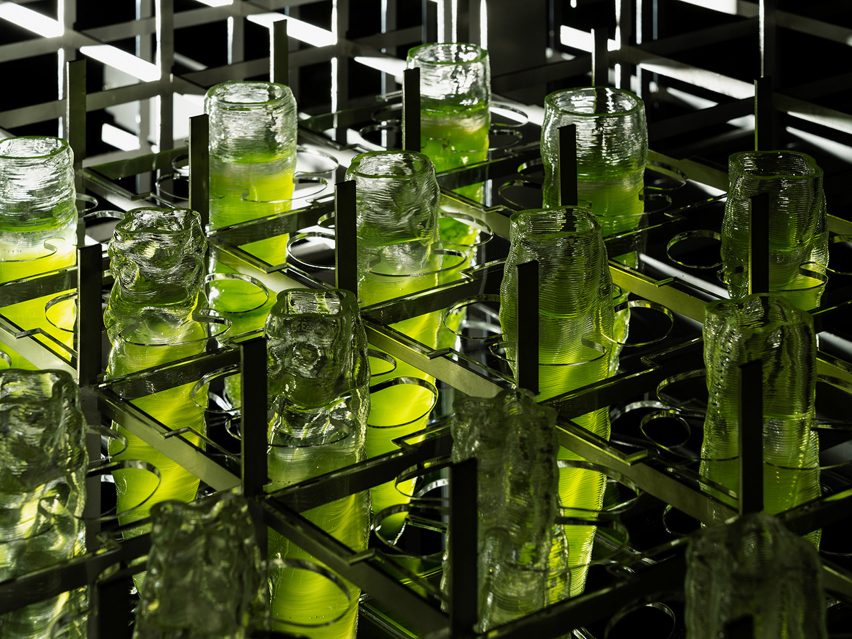
Made of lab-grade borosilicate glass and 3D-printed bioplastic, each BioBombola produces up to 100 grams of edible algae a week, which EcoLogicStudio says equates to enough protein for a family of four.
The studio also estimates that each unit, containing 10 litres of microalgae cultures, absorbs as much carbon dioxide as three large mature trees. This "provides a clear path to carbon neutrality in architecture," according to the studio.
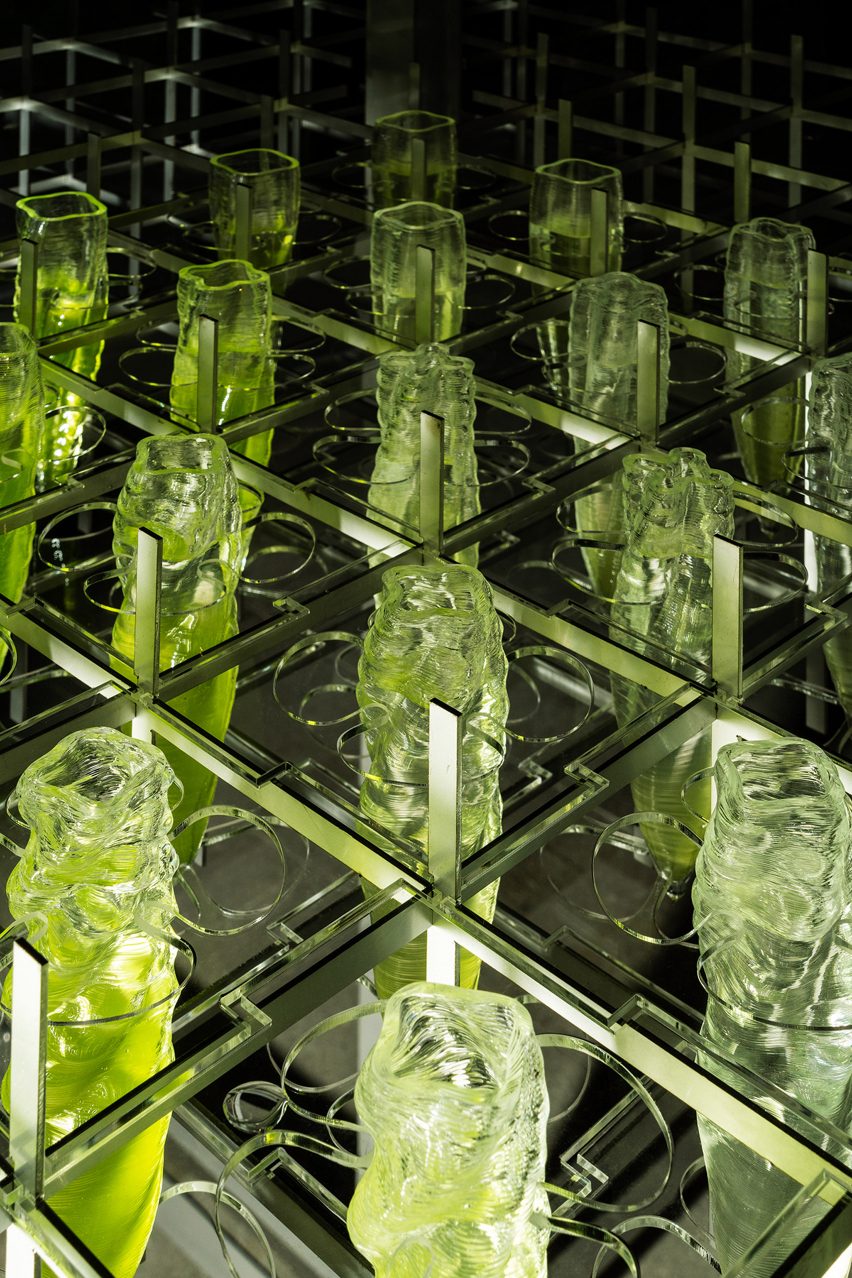
EcoLogicStudio's projects conceive architecture as a symbiotic organism, one where human and non-human organisms live together.
"The future of green technologies emerging from the landscapes of the post-anthropocene era is wet, soft and behavioural," studio co-founder Claudia Pasquero told Dezeen.
"Cities are evolving into intelligent super-organisms and shall become capable of searching for opportunities of co-evolution within the urban sphere, both for their human and non-human citizens."
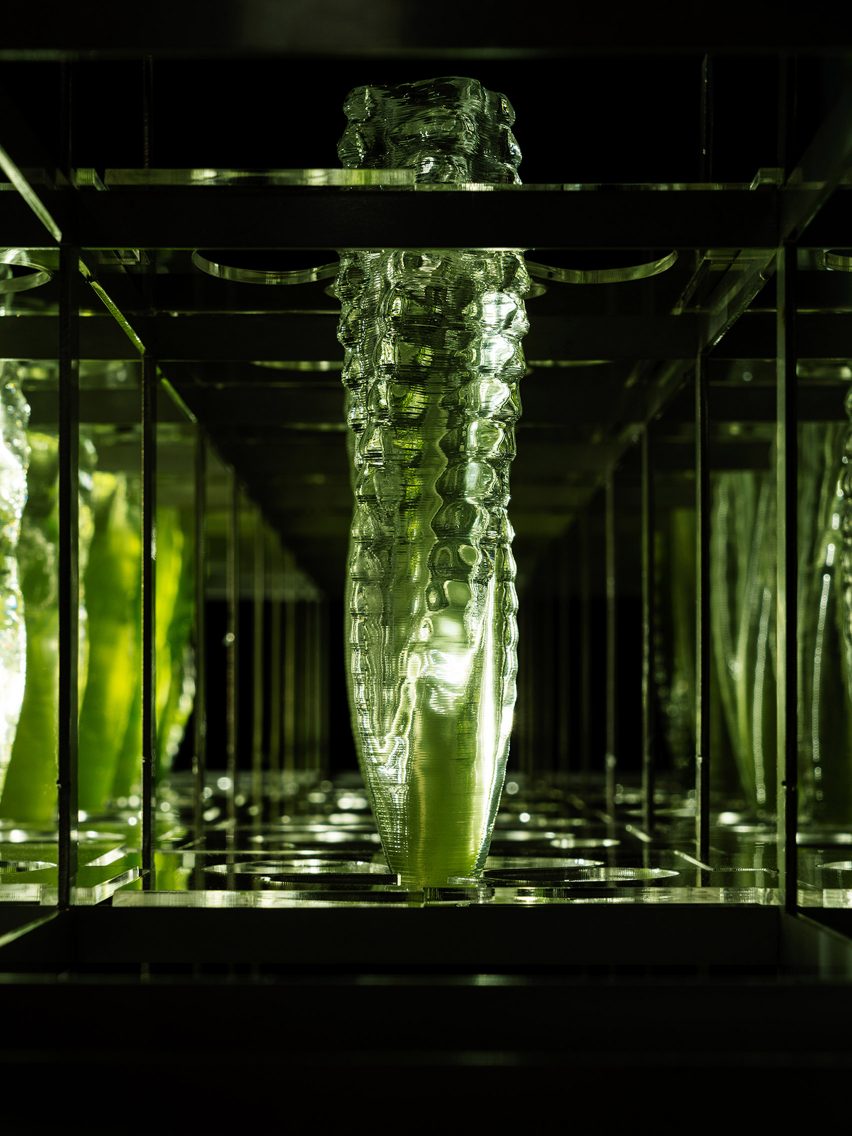
The Bit.Bio.Bot exhibition is so named because it combines computational design strategies (bit) with fabrication techniques (bot) to "implement a collective microbiological cultivation protocol" (bio).
It is part of the Venice Architecture Biennale's Arsenale venue, curated by Hashim Sarkis, and features in a section titled As New Households.
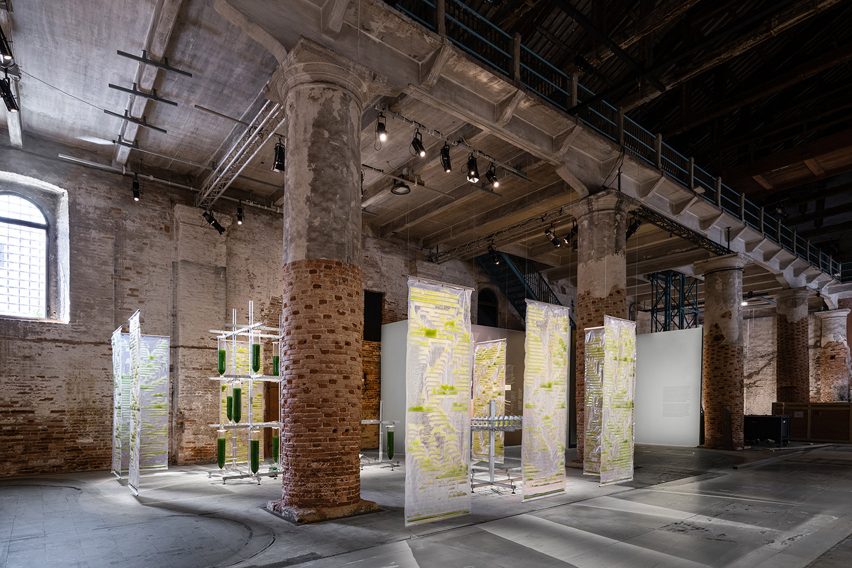
The installations are fully reversible and have all found future homes in the community where they will go once the exhibition ends.
Photography is by Marco Cappelletti.
Bit.Bio.Bot will be on display at the Corderie, Arsenale as part of the Venice Architecture Biennale, which takes place from 22 May to 21 November 2021. See Dezeen Events Guide for all the latest information you need to know to attend the event, as well as a list of other architecture and design events taking place around the world.
Project credits:
Project Team: Claudia Pasquero, Marco Poletto with Eirini Tsomouku, Oscar Villarreal, Claudia Handler, Korbinian Enzinger, Terezia Greskova, Alessandra Poletto, Emiliano Rando, Joy Bolois.
Academic partners: Synthetic Landscape Lab IOUD Innsbruck University, Urban Morphogenesis Lab BPRO The Bartlett UCL
With the additional support of: Innsbruck University, Swarovski, Ecoduna, Destination Wattens, anonymous donor